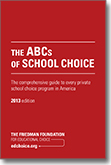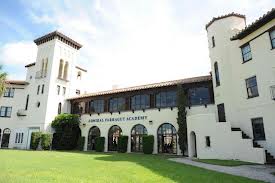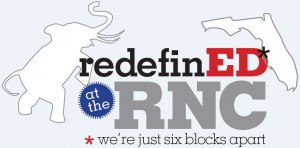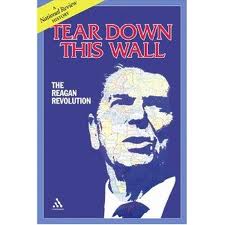The American Federation of Teachers released a new survey this week, “Public School Parents and the Promise of Public Education,” that claims many things. But most important to school choice supporters, it says the vast majority of parents prefer traditional public schools and are opposed to educational options.
The quality of any survey is heavily dependent upon the methodology applied and, of course, the questions asked. AFT and the firm that did its survey, Hart Research Associates, condensed their findings in a short memo that’s worth reading.
The memo suggests the survey question about vouchers may be misleading participants by directing them along a predetermined path. For example, participants were asked to choose the better of two education approaches. Take a look at the language below (from page 6):
Approach A) We should focus on ensuring that every child has access to a good public school in their community. We need to make the investments needed to ensure all schools provide safe conditions, an enriching curriculum, support for students’ social and emotional development, and effective teachers.
Approach B) We should open more public charter schools and provide more vouchers that allow parents to send their children to private schools at public expense. Children will receive the best education if we give families the financial freedom to attend schools that meet their needs.
Not surprisingly, 77 percent of survey participants chose Approach A.
There are a few glaring problems. (more…)
National. A new study from CREDO shows charter schools improving nationally, compared to traditional public schools, but with results varying widely from state to state. National coverage in the New York Times, Washington Post, Hechinger Report, Charters & Choice, Associated Press, Huffington Post. State-level coverage in the Minneapolis Star Tribune, Salt Lake City Tribune, Tampa Bay Times, Detroit News, Newark Star Ledger, The Morning Call, St. Louis Post-Dispatch, New Orleans Times Picayune.
 National. Charter school waiting list nears 1 million nationally, according to a new survey from the National Alliance for Public Charter Schools (The Charter Blog). More from the Los Angeles Daily News.
National. Charter school waiting list nears 1 million nationally, according to a new survey from the National Alliance for Public Charter Schools (The Charter Blog). More from the Los Angeles Daily News.
Ohio. Lawmakers move to expand vouchers statewide for low-income students, beginning this fall with 2,000 kindergartners and expanding one grade level each year. (Friedman Foundation)
Wisconsin: Lawmakers expand vouchers statewide but with an enrollment cap of 500 the first year (Education Week). State Superintendent of Public Instruction Tony Evers criticizes the proposal (Journal Sentinel). Democrats predict a backlash (Wisconsin State Journal). Private schools in Madison consider whether to participate (Wisconsin State Journal). Same with schools in the Wausau area (Wausau Daily Herald). A key lawmaker leaves the door open for another stab at a voucher for special-needs students (Wisconsin Reporter).
Indiana. Voucher supporters are giving a thumbs up to the expansion that begins Monday (Evansville Courier & Press). The Louisville Courier Journal raises questions about whether private schools have the capacity to absorb additional students.
New Jersey: Gov. Chris Christie plans to sign off on the state budget, saying he'll bring back the fight for school vouchers next year (Newark Star-Ledger). Newark Mayor Cory Booker reiterates his support for school choice in his bid for U.S. Senate (Associated Press). Teachers and parents criticize the decision by Education Commissioner Chris Cerf to put the kibosh on a virtual charter set to open this fall (Newark Star-Ledger). (more…)
The question of how to hold private schools academically accountable for publicly supported, school voucher students remains contentious and, frankly, unclear. But to oppose tests out of fear the opposition will twist the results is simply untenable.
In one of the latest venues where this debate played out, at the American Federation For Children policy summit this week on the banks of the Potomac River, part of the audience broke into applause when Bob Smith, the former president of Messmer Catholic Schools in Milwaukee, pushed back on testing. Smith and Messmer schools are both highly regarded, and he was not coy about his rationale.
“We have some enemies who have sworn they are going to destroy this program, beginning with two presidents of the United States, and a number of secretaries of education,” Smith said. “Until those people stand up, and with the same fervor, deny that they will use that data against private schools, I will not trust them.”
At least two of the panels during the two-day event revealed the ongoing split over how, or even whether, to test students on school vouchers and tax credit scholarships.
Not surprisingly, Robert Enlow, president of the Friedman Foundation For Educational Choice, made an eloquent and principled case for why the marketplace itself is a powerful force for assuring quality. Parents whose students are on scholarships, just like parents whose students are on private tuition, can and do walk away from schools that aren’t serving their needs – in some case putting schools out of business in the process.
Adam Emerson, director of parental choice for the Fordham Institute, made the principled case for why public is different. Public schools are under enormous pressure to produce results on state tests, with sometimes severe consequences for failure. To expect private schools serving publicly supported students to be immune from that system is unrealistic. It also denies elected policymakers who are paying the bill a test that they view as an important report card.
One slice of the divide that was hard to ignore was the contributions of the only current school administrator to serve on either panel. (more…)
 The Friedman Foundation’s latest “ABCs of School Choice” guide is out, and the numbers go like this: 21 states, 39 programs, 255,000 kids.
The Friedman Foundation’s latest “ABCs of School Choice” guide is out, and the numbers go like this: 21 states, 39 programs, 255,000 kids.
The guide offers a state-by-state rundown of the publicly funded, school choice options that are a vital piece of the overall school choice picture. It includes profiles of the students, parents and teachers who benefit from them. And it presents some thought-provoking stats, like how the value of each choice option compares to per-pupil funding in traditional public schools.
In Florida, a tax credit scholarship for low-income students is 34 percent of what’s spent on a traditional public school student, according to the Friedman analysis. Our own back-of-the-envelope calculations would put the percentage slightly higher, but the point is spot on: “voucher” students receive far less for their education than their public school peers. It’s a relevant detail that deserves more attention as the debate unfolds over testing for scholarship students and regulatory accountability measures for the private schools that enroll them.
The Florida section of the guide also includes a mini-profile of Davion Manuel-McKenney, a former tax-credit scholarship student who is now a freshman at Florida State College at Jacksonville. (Full disclosure: the tax-credit program is administered by Step Up For Students, which co-hosts this blog.) The story of Davion and his mother is a moving one. Click here to read more about it.
A 73-second exchange between Gov. Rick Scott and capital reporters last week has raised the profile of testing in Florida’s scholarship for low-income children, but done little to deepen the debate. The question of testing is a legitimate one, but cannot be separated from the educational context.
Gov. Scott had no time to deal with such complexity. He was fielding rapid-fire questions after a state Cabinet meeting when he was asked whether students on vouchers should take the same test as those in public schools. His first answer: “Look, if you’re going to have state dollars, you’re going to have similar standards.” On followup, he said: “I believe anybody that gets state dollars ought to be under the same standards.”

If the state required tax credit scholarship students to take the same tests as their public school counterparts, what might that mean for say, the 21 scholarship students at the highly regarded Admiral Farragut Academy in St. Petersburg? They’re a tiny portion of the 400 students at the school, which accepts the $4,335 scholarship as full payment. Would those students lose out on a remarkable learning environment?
The governor’s instinct is strong, but the statement took on a life of its own, spurring news coverage, editorials and a distinguished post from the Fordham Institute. Not surprisingly, much of the reaction was one-dimensional, focused on apples and oranges and what Ralph Waldo Emerson might have called a “foolish consistency." So allow me, as policy director for Step Up For Students, the nonprofit that oversees the Florida Tax Credit Scholarship for 50,812 low-income students this year in Florida, to try to paint the broad landscape.
Under Florida’s scholarship program, students are required to take nationally norm-referenced tests approved by the state Department of Education. More than two-thirds take the Stanford Achievement Test. Another fifth, which comprises mainly the Catholic schools, take the Iowa Test of Basic Skills. The test-score gains are then reported publicly each year by an independent researcher, respected Northwestern University professor David Figlio. Starting this year, those gains are also reported for every school with at least 30 students who have current- and prior-year test scores. The validity of these testing instruments is not really in dispute, which is why it is more than a little disconcerting that their results have been scarcely mentioned. The state’s leading newspaper managed to write an entire editorial directive, “Holding voucher schools to account is overdue,” without a single reference.
So, for the record, the state so far has issued five years of test reports for the tax credit scholarship, and two findings have been persistent: 1) The students choosing the scholarship were the lowest performers from the traditional public schools they left behind; and 2) On the whole they are achieving almost precisely the same test gains in reading and math as students of all incomes nationally. For the 70 schools that met the disclosure threshold this year, 50 kept pace with the national sample, eight exceeded and 12 fell short.
Not incidentally, these results provide the kind of data that is needed to judge whether students are making academic progress. (more…)
A district judge ruled Friday that Louisiana's statewide voucher program is unconstitutional because of the mechanism it uses to send public funds to private entities, prompting groans from school choice supporters, cheers from teachers unions and promises of an appeal from Gov. Bobby Jindal.
"Today is really significant," said Steve Monaghan, president of the Louisiana Federation of Teachers, according to Reuters. "What the governor was doing was unprecedented and unconstitutional under Louisiana law."
The reaction from Jindal: "Today's ruling is wrong headed and a travesty for parents across Louisiana who want nothing more than for their children to have an equal opportunity at receiving a great education," he said in a statement reported by the New Orleans Times Picayune. "That opportunity is a chance that every child deserves and we will continue the fight to give it to them."
More coverage from Associated Press, Wall Street Journal, Washington Post, Baton Rouge Advocate, Houma Today, Alexandria Town Talk, Christian Science Monitor, Education Week.
Reaction from American Federation for Children, Friedman Foundation, Louisiana BAEO, Dropout Nation, Time-Picayune columnist Andre Perry and the Louisiana School Boards Association.
 Between 1992 and 2009, the number of public school students nationwide grew by 17 percent while full-time school staff increased by 39 percent, according to a report released today by the Friedman Foundation for Educational Choice. But the extra employees didn't seem to do much good, the report continued, because student achievement nationally is flat.
Between 1992 and 2009, the number of public school students nationwide grew by 17 percent while full-time school staff increased by 39 percent, according to a report released today by the Friedman Foundation for Educational Choice. But the extra employees didn't seem to do much good, the report continued, because student achievement nationally is flat.
The report suggests public schools could have saved tens of billions of dollars each year had staffing levels grown more modestly, with the savings plowed into higher teacher salaries, early childhood education or vouchers for low-income students.
Florida's public school student population increased 36 percent over that span, the report points out, while its teaching corps grew by 70 percent.
There's no doubt Florida's class-size reduction amendment, which voters approved in 2002, played a role. Unlike their national counterparts, Florida students have made respectable gains over the past 10 to 15 years, due to many factors that are tough to untangle.
In this era of expanding school choice, the report leaves us wondering: Will public dollars be spent more effectively in a system organized around customization?
More on staff growth in public education at the EdFly Blog and this recent Jay P. Greene op-ed in the Wall Street Journal.
by Robert Enlow
States’ relationship with the federal government in education is like Gollum’s connection with the One Ring in “The Lord of the Rings”: They loves it, and they hates it. States either can “abide with the great pain” and continue with stagnating outcomes, or they can free themselves, their educators, and their families and achieve better academic results.
In 1966, through the adoption of the Elementary and Secondary Education Act, the federal government provided $2 billion for public education (using 2006 dollars). In 2005, that number increased to $25 billion. In 2010, total federal spending on K-12 education reached $47 billion. And in the American Recovery and Reinvestment Act alone, the feds dedicated $100 billion to public education.
This “free” money is what the states love. Who doesn’t love free stuff? But, as Milton Friedman so wisely said, there’s no such thing as a free lunch. With those federal funds come regulations on educators, debt for future generations and significant questions of whether those federal funds are spent on effective programs.
First, the regulations, which states and localities really hate: In 2007, Dan Lips and Evan Feinberg reported that although the federal government provided just 7 percent of overall funding for public education, it was responsible for 41 percent of the administrative burden placed on states. Those regulations inhibit educators, especially rural ones in small schools, from doing their jobs effectively. And they inhibit the ability of state education departments to be as effective and efficient as possible. According to the Heritage Foundation:
“After the passage of No Child Left Behind (an update to the Elementary and Secondary Education Act), several states released calculations comparing the administrative cost of compliance to the amount of federal money they receive under the law. In 2005, the Connecticut State Department of Education found, for example, that Connecticut received $70.6 million through Title I of NCLB but had to spend $112.2 million in implementation and administrative costs.”
The federal government’s involvement in education also is placing a burden on the unborn. The United States is broke! It is nearly $16 trillion in debt. Federal education funds expended to states are borrowed. That, along with the federal government’s other “investments,” is unsustainable and must be curbed. (more…)
Oh how the blog gods have smiled down upon redefinED.
The 2012 Republican National Convention will be held in downtown Tampa this month – six blocks from the building that houses Step Up for Students and our humble blog. I received press credentials to cover the convention. And next week, as a lead-up to the event, we’ll be posting essays from some of the leading voices in school choice and education reform.
Here’s the line up: former U.S. Secretary of Education Margaret Spellings; Chester E. Finn, Jr., president of the Thomas B. Fordham Institute; Robert C. Enlow, president and CEO of the Friedman Foundation for Educational Choice; Joe Williams, executive director of Democrats for Education Reform; Michael B. Horn, executive director for education at the Innosight Institute; and Eva S. Moskowitz, founder and CEO of Success Academy Charter Schools.
With the RNC and November elections as a backdrop, we asked our contributors what – if anything – the federal government can do to promote school choice. It goes without saying that the responses are thoughtful, insightful and informative. They’re also diverse. They’ll give you plenty to think about – and even a few things to laugh at.
First up Monday: Secretary Spellings.
 Nobody invoked Ronald Reagan this week and demanded that somebody (Randi Weingarten? President Obama? The local school board?) “tear down this wall,” but two school choice champions got close. Step Up for Students President Doug Tuthill used the Berlin Wall analogy yesterday in a redefinED post about the big-picture trends in ed reform. And in a beautiful coincidence, Robert Enlow, president and CEO of the Friedman Foundation for Educational Choice, did so today in an op-ed for CNN.
Nobody invoked Ronald Reagan this week and demanded that somebody (Randi Weingarten? President Obama? The local school board?) “tear down this wall,” but two school choice champions got close. Step Up for Students President Doug Tuthill used the Berlin Wall analogy yesterday in a redefinED post about the big-picture trends in ed reform. And in a beautiful coincidence, Robert Enlow, president and CEO of the Friedman Foundation for Educational Choice, did so today in an op-ed for CNN.
Wrote Enlow: “Just like the millions of East Germans who demanded freedom, we know that there are millions of parents that want to be removed from a system that uses a zip code to determine where their children must attend school.” He concluded, “Vouchers should be made available to children no matter if they are poor, disabled, from the middle class or from a family of 10, or from a rural, suburban or urban area. There should be no restrictions on who gets to choose, just like there were no restrictions on who could escape tyranny once the Berlin Wall fell.”
Also by coincidence, one of the nation’s biggest pollinators for school choice, Jeb Bush, delivered an ed reform speech in Colorado this week. He didn’t explicitly urge anyone to tear down any walls, either, but according to Education News Colorado he did implore the audience of 1,700 to “join reformers to make school choice both public and private the norm in our country."
Hmmm. Anyone else see speech potential here? Tampa. August. Fired-up delegates shouting "Tear down this wall!" as millions watch ...